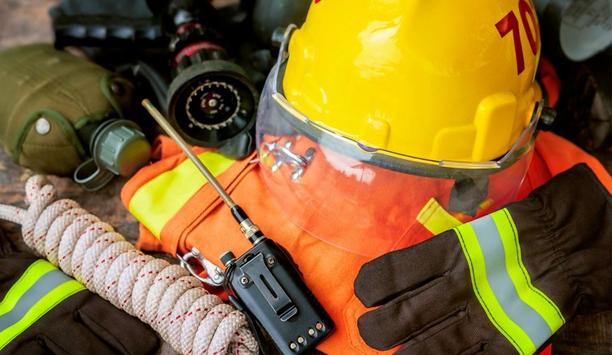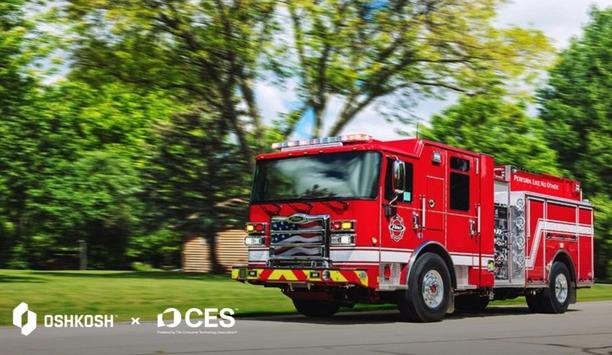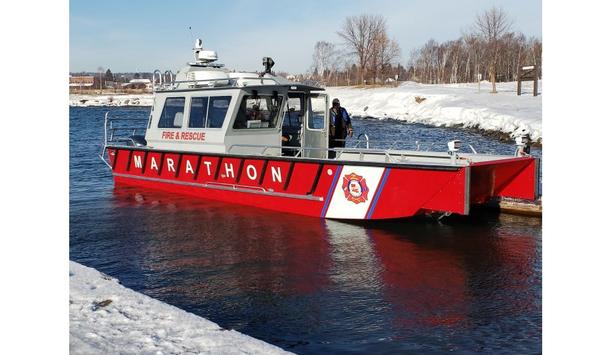Fire safety in the built environment has become an ever more important design requirement in recent years. With a greater focus on testing and continuous product development, fire safety has never been more essential.
From advancements in fire products and improved testing to changes in how people are approaching fire safety throughout the construction industry, demand continues to grow for safer, more reliable fire-resistant solutions. Optima will take a look at what the construction industry is doing to improve fire protection within the built environment.
A more holistic approach to fire protection
One way the industry has changed direction is by introducing a more holistic approach throughout a building’s lifecycle. As a result, this means we are now seeing more clearly defined responsibilities for fire safety design.
From designers and architects to project managers, installation teams, and clients themselves, everyone has a vital role to play. By taking this new approach duty holders can ensure they carry out work safely and competently at each stage.
Fire safety personnel
Having clearly defined fire safety personnel at the different stages of a project helps to achieve and maintain standards.
Constantly reviewing any fire requirements on a project, these duty holders work as on-site fire coordinators. Each duty holder must have a clear understanding of the fire performance of the systems being installed.
Installation
Optima can ensure the construction and maintenance of better, safer fire-rated structures
Whether it is a Principal Designer or Contractor, comprehensive knowledge of components and the justification for their installation across the project will lead to better utilization of skills. Therefore, creating a safer, more reliable, and enhanced finished product.
This extends beyond the handover as it is also important that clients and occupants understand the fire systems and protocols. By making this approach common practice, Optima can ensure the construction and maintenance of better, safer fire-rated structures.
Fire training and CPD
Another way the construction industry has adapted its fire safety methods is with increased training and continued professional development (CPD). Across the sector organizations have recognized the need for their employees to have the correct fire protection training.
Fire safety has become a far bigger priority in project contracts and tenders over the last few years. With this in mind, it is invaluable to have personnel who offer a wealth of knowledge and experience on-site.
Furthermore, as specialized pieces of technology, fire-rated systems behave very differently from other glass partitions or doors. Therefore, it is key that those specifying and installing these systems have a detailed understanding of their characteristics.
Educational and Professional Development Framework
The introduction of RIBA’s new Educational and Professional Development Framework reinforces this increased focus on training and development. Considered 'the biggest shake-up of the profession since the 1950’s' the Way Ahead framework pays greater emphasis on health, life safety, climate emergency, and professional ethics.
RIBA states it is key that across society we are embedding fire safety knowledge at all levels to ensure that we are making society better, safer, and more competent- especially in the realm of fire safety.
Fire safety procedures
By focusing on education and upskilling, the industry as a whole will continue to develop its fire safety procedures
As well as RIBA’s industry standard framework many companies across the sector have created their internal training and certifications. This ensures that employees are receiving the correct training whilst allowing companies to tailor development to their specific requirements.
By focusing on education and upskilling, the industry as a whole will continue to develop its fire safety procedures. Placing fire training at the top of the agenda, the sector is leading the way for safer fire- rated environments.
Research, development, and testing
Research and development (R&D) play a critical role in the advancement of fire safety. R&D provides businesses with strong knowledge and insight into the effectiveness of their products and processes.
It has become vital for companies to invest their time and money in developing the best possible fire-rated products. As the architectural world continues to change, fire products must adapt to this ever-evolving landscape.
Fire-rated products
By devoting time to the development of fire-rated products users have seen great improvements across the industry.
Working alongside designers and fire regulatory bodies there has been an increase in the number of project-specific developments. As a result, projects are being offered bespoke fire solutions as opposed to simply installing the best fit.
Fire Solutions
The commitment to providing projects with fire solutions generates a constant drive for new and better products
Also, continued R&D has led to many organizations looking ahead and anticipating the changing needs and trends within built environments. This, therefore, leads to more testing and more product development for applications not already covered by existing systems.
As a result, this has a knock-on effect, creating a mindset within the industry that is continuously looking to innovate. This commitment to providing projects with the best-performing fire solutions generates a constant drive for new and better products.
Complete transparency
A major way the construction industry is changing is with an increased focus on transparency throughout a project’s lifecycle. Record-keeping around projects is fragmented, which causes uncertainty around whether finished structures are a true representation of the original design. This can significantly impact a building’s safety as it is difficult to know who or when decisions were made.
Therefore, all parties working on a project must be not only kept up to date with any changes that occur but also that these changes are well documented. Ensuring everyone involved from design to demolition has correct and current information enhances the overall safety of a building.
'Golden Thread' Model
A particularly popular way to combat any confusion surrounding a project is by introducing the 'Golden Thread' model. Considered the Holy Grail of the new building safety regulatory landscape, it brings an infinitely higher degree of confidence in the safety of a finished structure. The live document offers a digital record of every aspect of the build, making information available to everyone involved.
Therefore, it ensures that critical building safety information, including any specific fire protection systems, is always available. This is a crucial addition as a clear and open trail of information throughout the building’s lifecycle is vital.
fire-rated product guides
Guaranteeing data is available to support the design of a project, and provides greater accountability
Furthermore, through the publication of readily available fire-rated product guides, manufacturers can continue to ensure complete transparency. Guaranteeing data is available to support the design of a project, and provides greater accountability during a build.
Publishing product details and certification ensures only the installation of certified and trustworthy components. This gives complete confidence that everyone is taking the correct steps to produce a safe finished product for the future.
To conclude
Fire safety is set to continue to take on a bigger role within the built environment. Therefore, the construction industry must continue to keep it at the forefront of their minds. From changes in how we approach fire protection to sustained development and testing, the construction sector is making great strides.
With further financial investment and an increased focus on education, the industry will continue to move in the right direction, producing safer fire-protected buildings.















